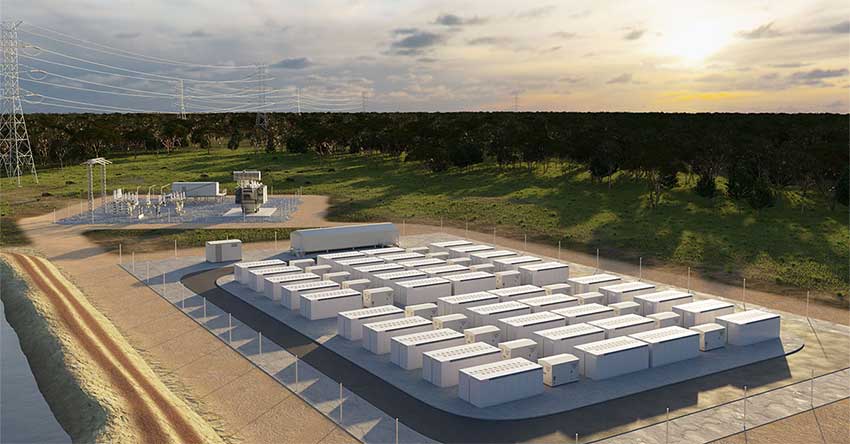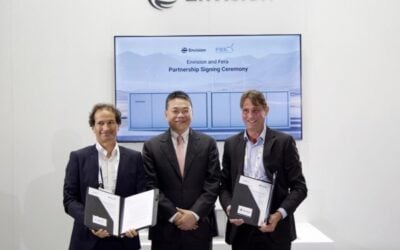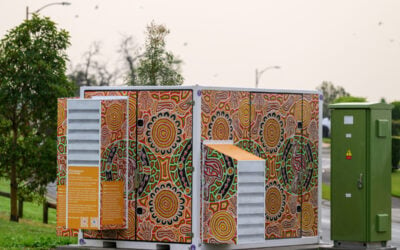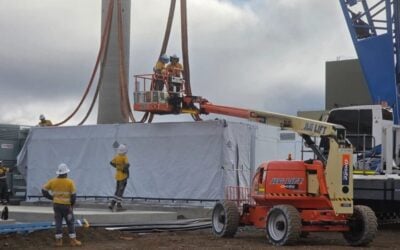
A peaker plant in project in Queensland, Australia, which would have relied on 1,000MW of gas generation will instead use just 150MW of turbines and lean on large-scale battery storage to fill the gap.
Queensland’s state Planning and Environment Court (P&E Court) last week gave development approval to the proposal’s radical amendment for project owner Quinbrook Asset Management.
Enjoy 12 months of exclusive analysis
- Regular insight and analysis of the industry’s biggest developments
- In-depth interviews with the industry’s leading figures
- Annual digital subscription to the PV Tech Power journal
- Discounts on Solar Media’s portfolio of events, in-person and virtual
Quinbrook acquired the Lockyer Energy Project, near Gatton in Queensland’s Lockyer Valley region, back in 2009. The idea was to help replace local reliance on coal-fired generation to provide with something cleaner.
At the time, that meant adding peaking capacity with gas turbines. Peaker plants run only at times of high electricity demand, which means that they generally have a low capacity factor – in many instances they are only called into action for about 10% of the entire year, each year.
Although the original application for the Lockyer project which was acquired from developer Westlink was eventually approved in 2014, law firm Thynne & MacCartney said it represented Quinbrook at the Queensland P&E Court on 22 April seeking approval for the amendment – and got it.
Lockyer will now include 150MW of gas turbines, with an 850MW battery energy storage system (BESS). The megawatt-hour (MWh) capacity of the BESS was not mentioned in a Thynne & MacCartney announcement, but it is likely to be in the range to provide four-hours duration.
The hybrid gas-BESS solution would export energy for immediate use as well as store electricity for export at times of high demand. The law firm noted that when the Lockyer project was originally conceived, such an option would not have been considered feasible, but things have quickly changed in terms of the economics as well as technologies involved.
The turbines which will be used will also be more advanced than those proposed in the original planning application, meaning they will be faster to start up and more fuel-efficient.
Recently-published research by Australian solar energy consultancy SunWiz noted that development of grid-scale battery storage has not taken off as quickly in Queensland as it has in some other Australian states like Victoria or South Australia. Queensland’s state government did however commit in March to invest in a 100MW/200MWh BESS project (rendering pictured above), which will be built by CS Energy, a power company it owns.
Economic rationale for fossil fuel plants diminishing
Research published last year by Australian national industry group Clean Energy Council argued the case for batteries and renewable energy as an economically viable as well as cleaner alternative to new gas peaker plants in the country.
Clean Energy Council expert Lilian Patterson told Energy-Storage.news at the time that it was “no longer economically rational” to build new fossil fuel-only peakers. Even since that interview was published last July, various rule changes in the National Electricity Market (NEM) have come into play, or been proposed, which further tip the scales in favour of fast-responding clean energy assets, particularly battery storage.
Anger was voiced in February as a 660MW peaker plant proposed in New South Wales (NSW) was given cross-party approval by politicians, albeit that approval was conditional on the plant running on 30% green hydrogen from its planned opening date in 2023, and then 100% by 2030. One expert said the project would be a “government-built white elephant”.
On a related note, Energy-Storage.news reported a few days ago that in New York, US, public utility New York Power Authority (NYPA) is seeking proposals to adapt a fleet of peaker plant sites in its service area to instead host battery storage systems.
A study commissioned by NYPA found that by 2030, if not before, four-hour duration BESS assets could effectively play the role of providing peaking power just as well as fossil fuel plants, at lower economic, social and environmental cost.
Meanwhile elsewhere in the US, Primergy, a developer in Lockyer project owner Quinbrook’s portfolio, closed US$1.9 billion financing on Gemini, a large-scale solar-plus-storage project in Nevada, Energy-Storage.news reported yesterday.






